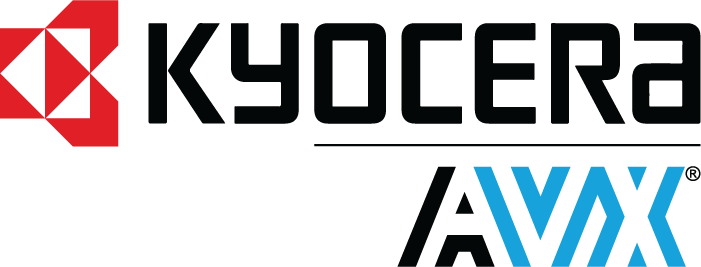
KYOCERA AVX
KYOCERA AVX is a leading manufacturer of electronic components, specializing in ceramic capacitors, connectors, and filters. With a history dating back to 1972, KYOCERA AVX has become a trusted name in the electronics industry, known for their high-performance products and exceptional customer service. The company's product portfolio includes a wide range of passive electronic components designed to meet the specific needs of various industries, including automotive, aerospace, and telecommunications. KYOCERA AVX's state-of-the-art facilities, advanced technologies, and skilled workforce enable them to deliver customized solutions with exceptional accuracy and reliability. The company is committed to sustainability, using eco-friendly materials and production methods to minimize their impact on the environment. Through continuous innovation and a customer-centric approach, KYOCERA AVX continues to drive progress in the field of electronic components, providing cutting-edge products designed to meet the evolving needs of modern industries.
Fiber Optic Transmitters - Drive Circuitry Integrated
Results:
Results remaining:0
Applied Filters:
KYOCERA AVX
No data |
About Fiber Optic Transmitters - Drive Circuitry Integrated
Fiber optic transmitters with integrated drive circuitry are advanced components used to inject signals into fiber optic cables. These transmitters combine a light source, such as an LED or laser, with signal conditioning electronics, which include the necessary circuitry for driving the light source and ensuring proper signal transmission. These transmitters find widespread applications in various fields, including digital audio, DVI (Digital Visual Interface), Ethernet, HDMI (High-Definition Multimedia Interface), telecommunications, and general data transfer. They enable high-speed and reliable transmission of digital signals over fiber optic networks. One of the key differentiating factors for fiber optic transmitters is the transmission wavelength. Different wavelengths are utilized based on the specific application and network requirements. Common transmission wavelengths include 850 nm, 1310 nm, and 1550 nm, among others. The choice of wavelength depends on factors such as transmission distance, available fiber optic infrastructure, and compatibility with receiving devices. Another important parameter for differentiating fiber optic transmitters is the data rate, which is typically expressed in bits per second (bps). The data rate represents the speed at which digital information is transmitted through the fiber optic cable. Higher data rates allow for faster and more efficient data transfer. Common data rates supported by these transmitters range from Mbps (megabits per second) to Gbps (gigabits per second) and even higher speeds for advanced applications. By utilizing fiber optic transmitters with integrated drive circuitry, users can ensure accurate and reliable transmission of digital signals over fiber optic cables. These transmitters, with their light sources and signal conditioning electronics, provide the necessary functionality for various applications. The selection of the appropriate transmitter based on transmission wavelength and data rate allows for seamless integration within the network infrastructure and efficient data transfer.
